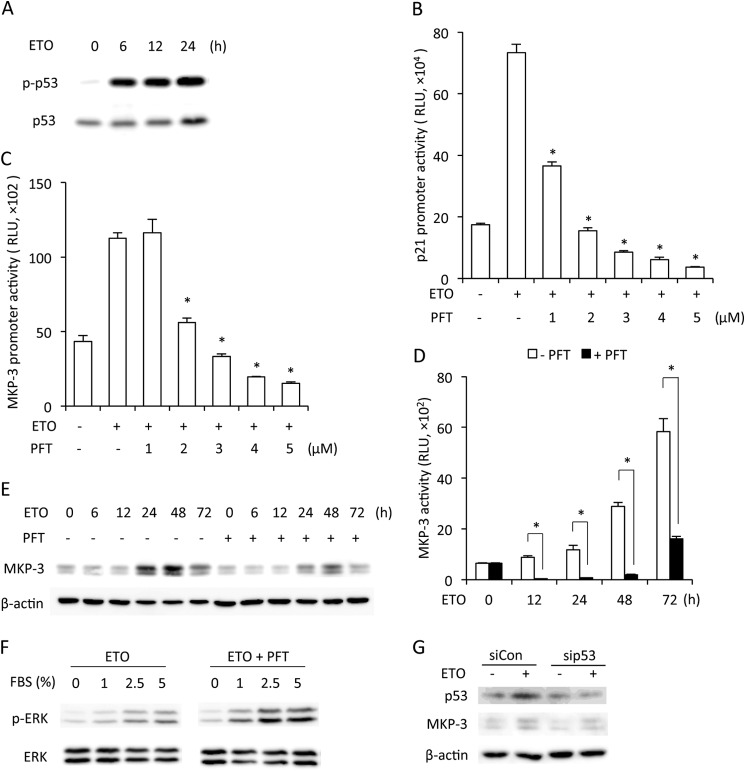FIGURE 4.
Role of p53 in activation of MKP-3 transcription. A, change of p53 during senescence. NRK cells were treated with 1 μg/ml ETO for the indicated time. Cell lysate were extracted and subjected to Western blot analysis of p-p53 and p53. B–E, involvement of p53 in MKP-3 expression. Cells transfected with the pGL3B/DUSP6-luc (B) or pGL3B/p21WAF1/CIF1-Luc plasmids (C) were treated with 1 μg/ml ETO in the absence or presence of the indicated concentration of PFT for 24 h. Cell lysates were extracted and assayed for luciferase activity. Data are mean ± S.E. (n = 4). *, p < 0.05 versus ETO alone. RLU, relative light units. D, cells transfected with the pGL3B/DUSP6-luc plasmid were treated with 1 μg/ml ETO with or without 5 μm PFT for the indicated time. Cell lysates were extracted and assayed for luciferase activity. Data are mean ± S.E. (n = 4). *, p < 0.05 versus the respective time point control. E, cells were treated with 1 μg/ml ETO with or without 5 μm PFT for the indicated time. Cell lysates were detected for expression of MKP-3. β-Actin was used as a loading control. F, regulation of ERK1/2 by p53. Cells were treated with 1 μg/ml ETO with or without 5 μm PFT for 3 days. Then cells were stimulated with the indicated concentrations of FBS for 5 min. Cell lysates were analyzed for the level of p-ERK1/2 and total ERK1/2. G, down-regulation of p53 with siRNA on MKP-3 expression. Cells were transfected with control or p53 siRNA. Cell lysates were subjected to Western blot analysis of p53 and MKP-3. β-Actin was used as a loading control. siCon, control siRNA.

